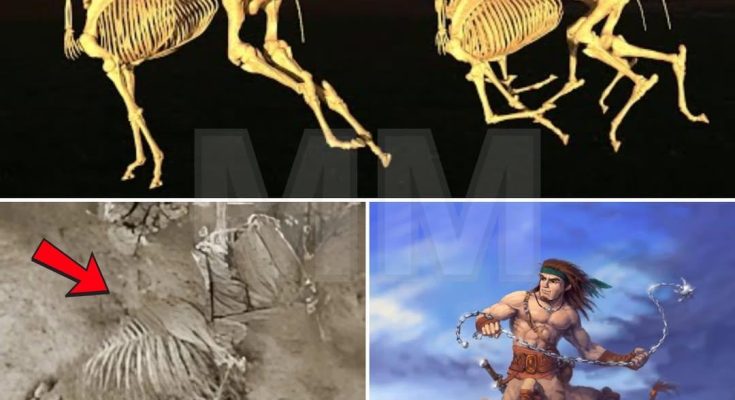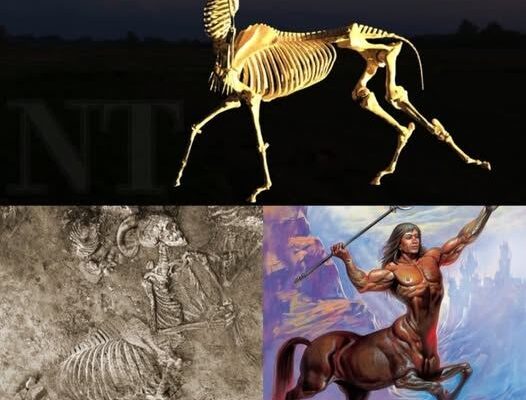For centuries, the centaur—a creature with the body of a horse and the torso of a human—has stood as one of the most enduring figures in Greek mythology. These half-human, half-horse beings were said to embody untamed wilderness, passion, and the conflict between civility and instinct. But now, a recent archaeological discovery in the rugged landscapes of Greece has reignited debate about where myth ends and history begins.
A Discovery That Defies Expectation
Archaeologists excavating a remote site reportedly uncovered a skeleton that appears to fuse human and equine remains. The burial was surrounded by ritual artifacts and carvings that suggest symbolic significance far beyond a simple interment. While initial reports stress caution, the find has stunned both scholars and the public. Was this a carefully constructed ceremonial burial, deliberately blending man and beast to honor myth? Or could it represent evidence of a long-lost cultural practice—or even a biological anomaly—that inspired the legendary centaurs of ancient Greece?
Myth and Memory Intertwined
The idea of the centaur has roots stretching back thousands of years. In Greek mythology, centaurs inhabited regions like Thessaly and Arcadia, often depicted as wild, untamed beings at odds with the structured world of humans. They symbolized the thin line between nature and culture, chaos and order.
The new discovery challenges scholars to consider whether myths like these emerged purely from imagination, or whether they were rooted in ritual practices and symbolic burials designed to embody these dualities. The archaeological evidence hints at a society willing to physically merge human and animal forms in death to communicate spiritual or cultural truths.
Symbolism in Ancient Burials
Ritual burials that blend human and animal remains are not unheard of in world archaeology. In various cultures, combining species in symbolic graves represented power, fertility, or protection. The Greek example, however, carries an added weight because of its connection to one of the most iconic mythological creatures of Western civilization.
The artifacts found alongside the skeleton—inscribed stones, ceremonial tools, and carvings—suggest that this was not a casual or accidental burial. Instead, it may have been an intentional act of storytelling in material form, a way of keeping myth alive through ritual practice.
A Challenge to History
While most scholars agree that the centaur was a mythological creation, this discovery complicates the narrative. It reminds us that myths often grow from kernels of truth—distorted memories of rituals, natural phenomena, or extraordinary individuals. Could the centaur myth have originated from burials like this one, preserved in cultural memory until transformed into legend?
The find forces us to confront the blurred boundary between myth and history, and the possibility that ancient people used ritual and symbolism to anchor their stories in physical reality.
Conclusion
The reported discovery of a centaur skeleton in Greece is more than an archaeological curiosity—it is a reminder of the enduring power of myth to shape human culture. Whether the remains represent ritual symbolism, an extraordinary anomaly, or a long-forgotten practice, they compel us to reconsider how mythology and history intertwine. For now, the centaur remains a creature of both stone and story, standing at the crossroads of imagination and reality




